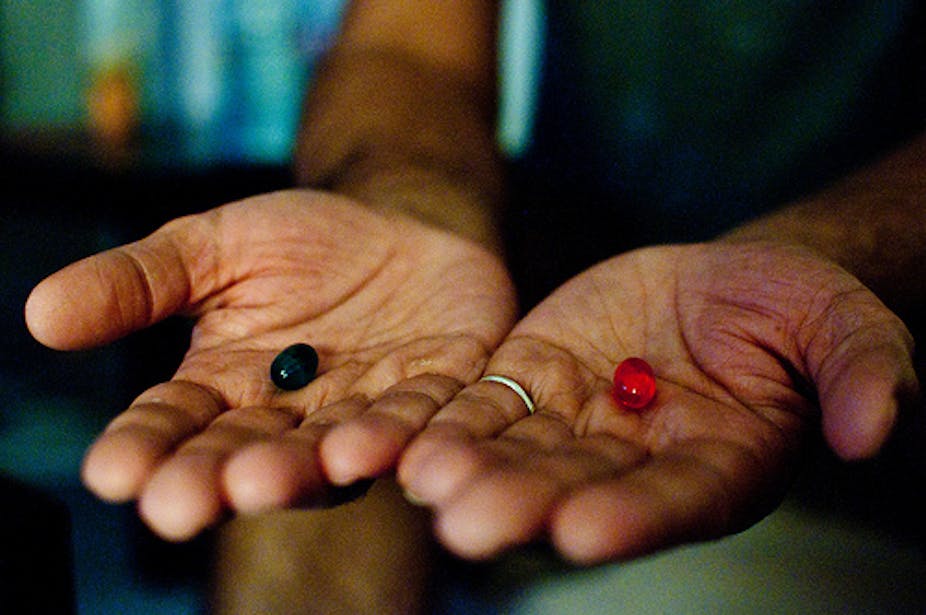“Would you like the generic brand of that medicine?” It’s a question you’ve probably been asked, or at least heard, when picking up a prescription at your local pharmacy.
It’s likely you were told the generic was exactly the same as the drug your doctor prescribed but a lot less expensive.
What are generic medicines?
Think about the many brands of paracetamol available in Australia. Some of the tablets are different shapes, sizes, colours and many contain different ingredients such as fillers and binders. But all of them contain the active ingredient: paracetamol.
In this case, Panadol 500mg paracetamol tablets would be considered a “brand leader” and Herron 500mg paracetamol tablets would be a generic.
When a new chemical is discovered, a pharmaceutical company will protect this intellectual property with a patent lasting generally for 20 years.
This seems like a long time but the patent must last from its discovery through to its launch onto the market as a medication for human use. This process may take 10 to 15 years, leaving the company only a short period of market exclusivity where it can recoup some of its financial investment.
When it comes to market, this new medication is called the brand leader. When the patent expires on this new chemical, other companies are free to market chemically identical copies of the brand leader. These copies are called generics.
What ingredients are in generic medicines?
There are three main types of generic medicines.
A pseudo-generic or “clone” medication is identical in all aspects to a “brand leader”, apart from its name and identifying details on the product label. In most cases, the pseudo-generic comes from the same factory as the brand leader.
The second type of generic is a licensed generic. These products are made with the same formulation as the brand leader but they’re made somewhere else by another company. In essence, this company has purchased the recipe to remake the drug.
The final type is the “true” generic. This means that the manufacturing company has formulated their own recipe containing the active ingredient.
Where clone and licensed generics are essentially identical to the original product and contain the active ingredient along with all other ingredients such as fillers, colouring agents and lubricants, a true generic may only contain the chemically active ingredient. Everything else may be different.
Why are generics cheaper?
Generic medications are generally available at a considerably lower cost because the companies producing them haven’t had to spend significant amounts of money involved in the initial drug discovery and development processes.
But not all medications will have generics available.
You can generally gauge the size of the potential market for a medication by the number of generic medications that are released when a patent expires.
When simvastatin, a popular cholesterol-lowering medication, came off patent, ten generics immediately arrived on the market. Cholesterol-lowering agents are currently the most prescribed and highest cost group of medications on the Commonwealth Government’s Pharmaceutical Benefits Scheme (PBS).
This means there’s an extensive market for generic medications in this area, which would justify the time and cost associated with developing a generic product.
There are significantly more generic medications available in the United States and United Kingdom because these countries have a larger pharmaceutical manufacturing industry than Australia.
The US and UK also have an appreciably larger population and therefore a bigger market for these medications.
Are generics safe?
To be listed on the PBS for a government subsidy, a prescription medication generic must show it’s therapeutically equivalent to the brand leader already listed.
The manufacturer is required to demonstrate that its active ingredient is present in a range of 80% to 120% of that contained in the original product.
This potential range is suitable for most medications patients use and assures the user that there is sufficient active ingredient in their medication to provide a therapeutic effect.
When can generics cause problems?
With the range of active ingredients varying between 80% and 120% of the brand leader, it’s important to take care when swapping brands of medications that have what we call a “medically narrow therapeutic window”.
This means the medication is particularly potent or strong and a small change in the amount of medication present in the bloodstream may significantly alter the effect on the patient.
Some examples of these potent medications include warfarin (a blood thinning agent), digoxin (for the heart), carbamazepine (for epilepsy) and fentanyl (for pain).
If you’ve been using a certain brand of these medications for a long period, the quantity of the active ingredient in your blood becomes steady and the benefits for the condition it’s treating are stabilised.
In this case, switching to another brand where the amount of the active ingredient in the product you are taking may vary, even a small amount, could alter the effects on your body.
If this is a potential problem, your doctor or pharmacists may advise you to remain on the same brand of your medication.
If you’re concerned about your medications or want to know whether a generic is available or suitable for you, talk to your doctor or pharmacist.

